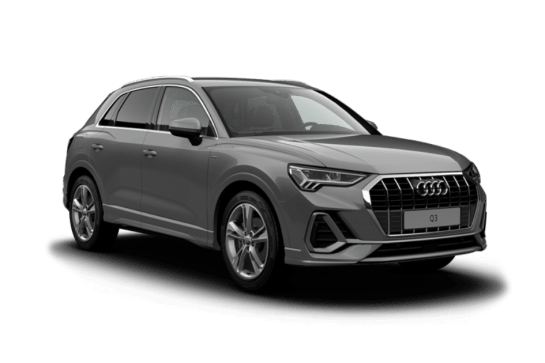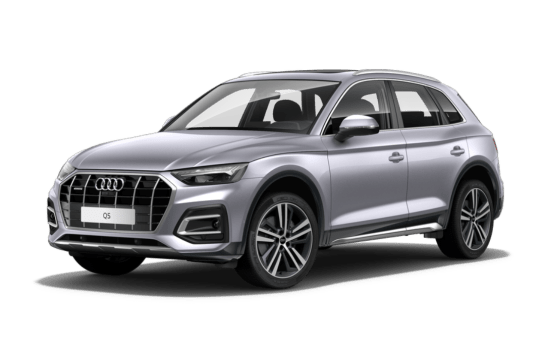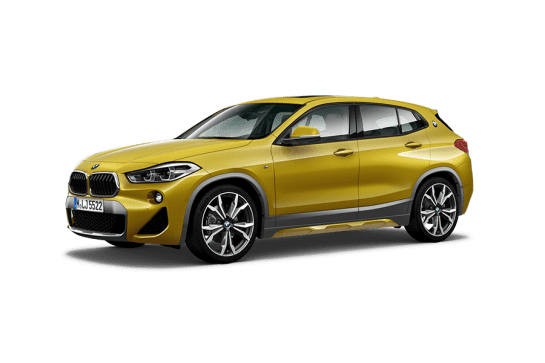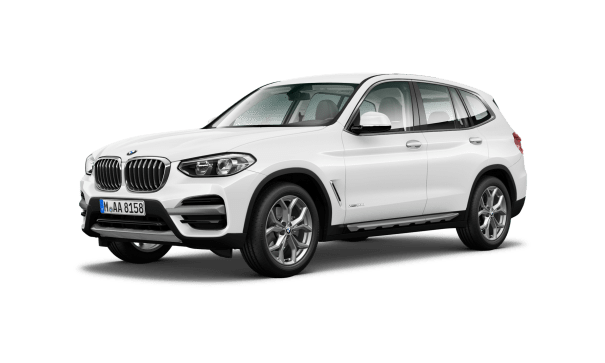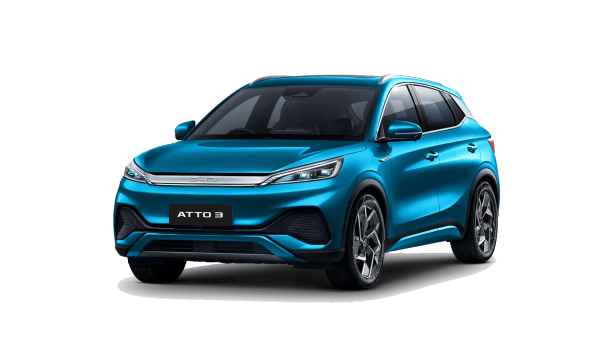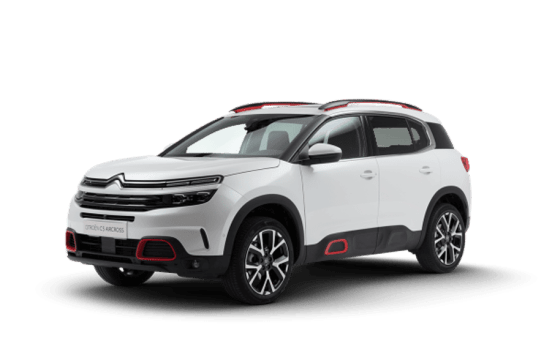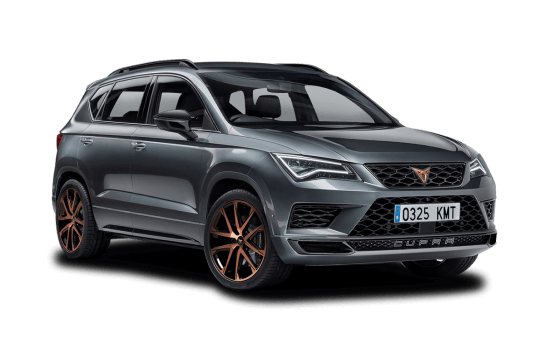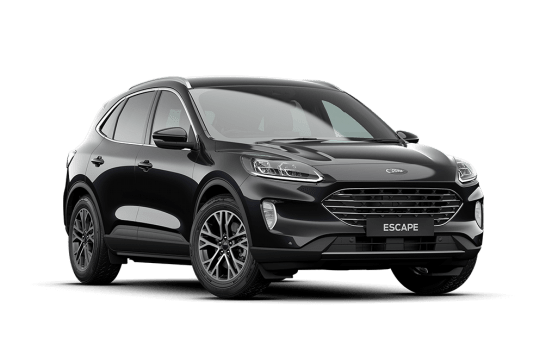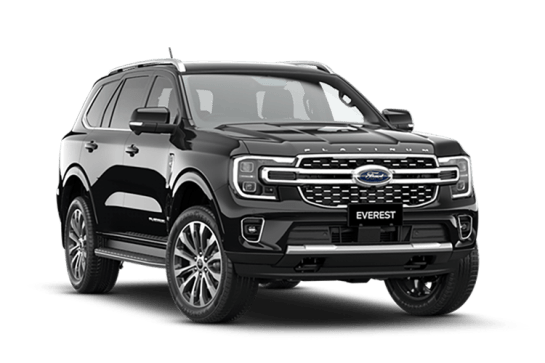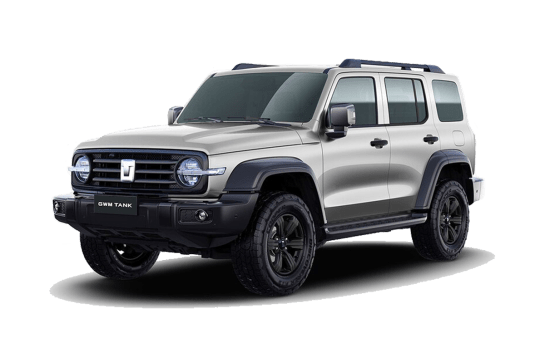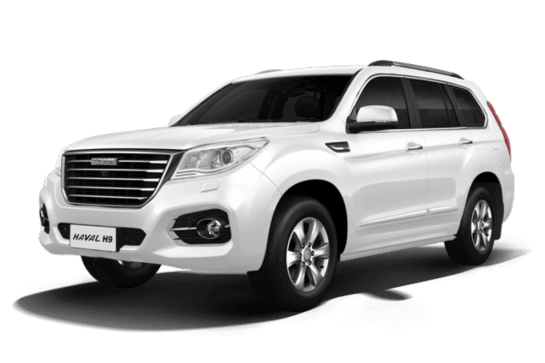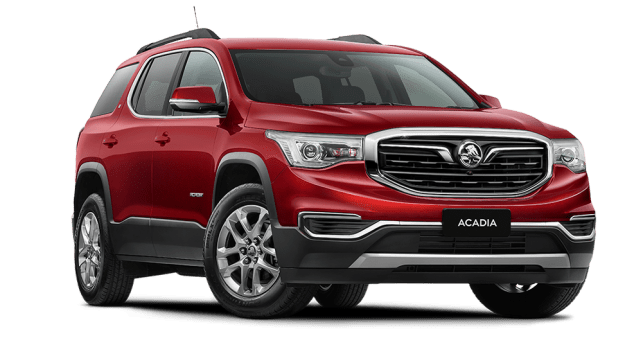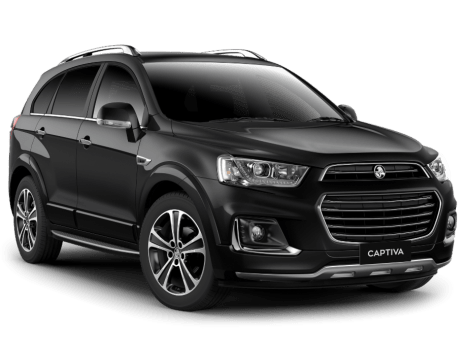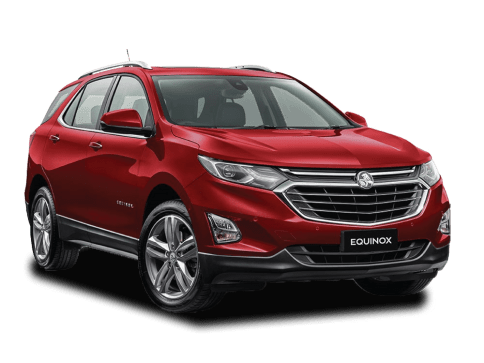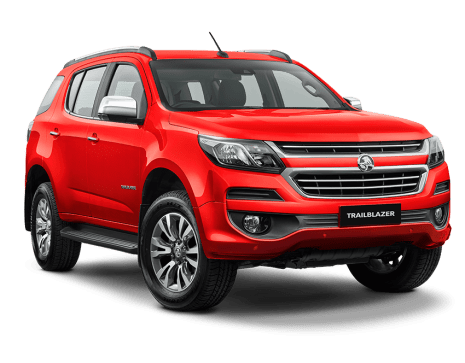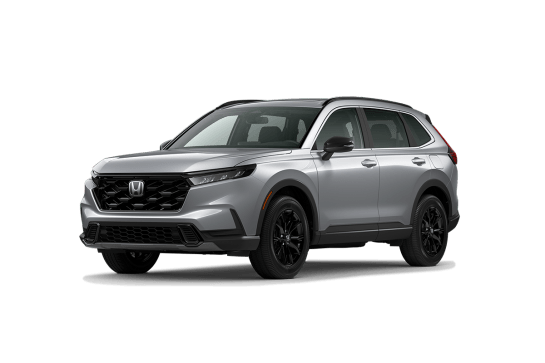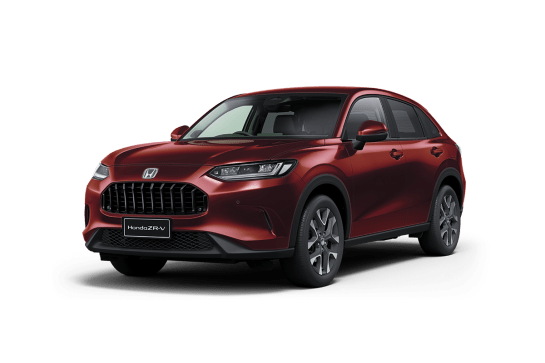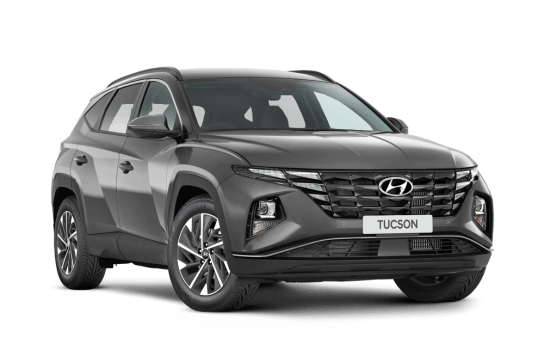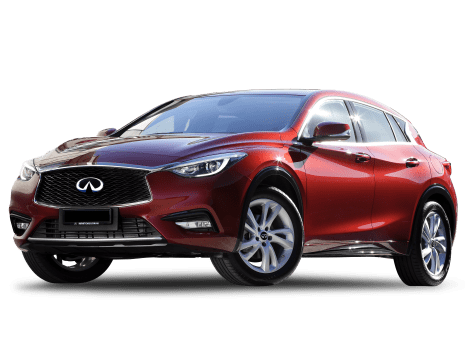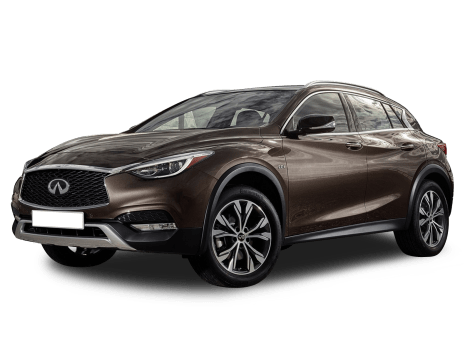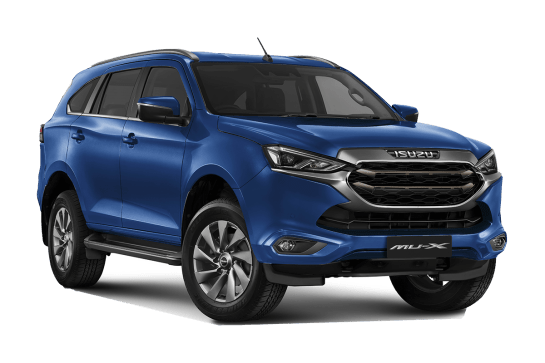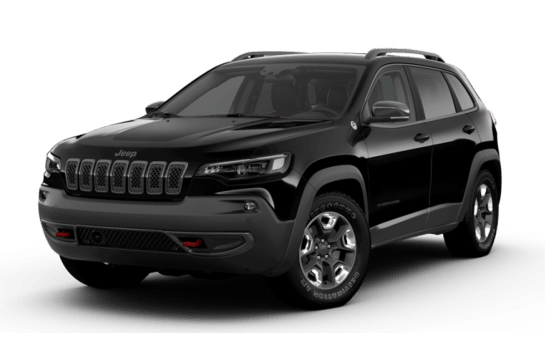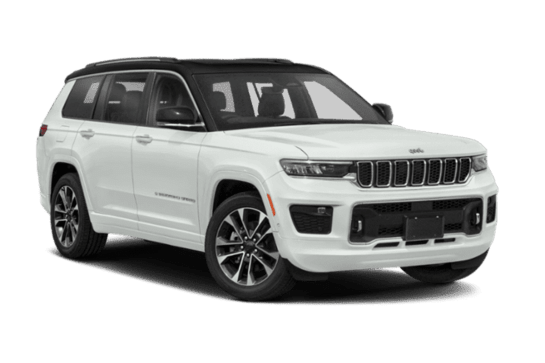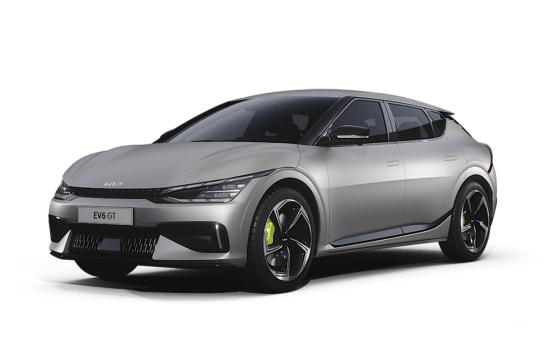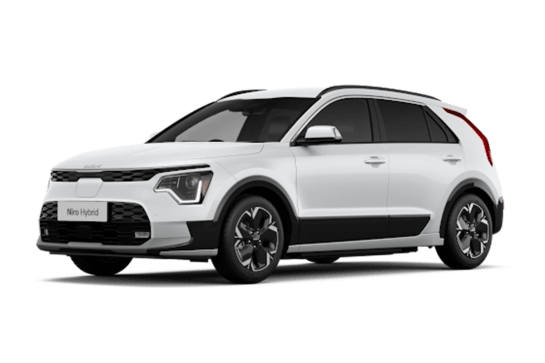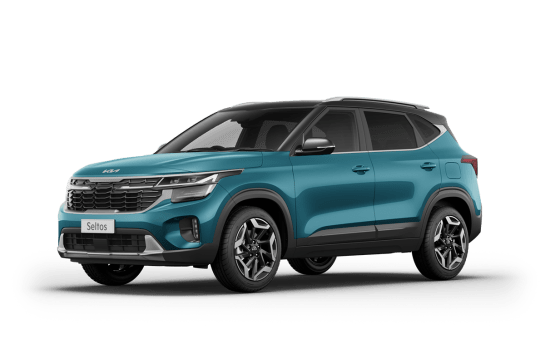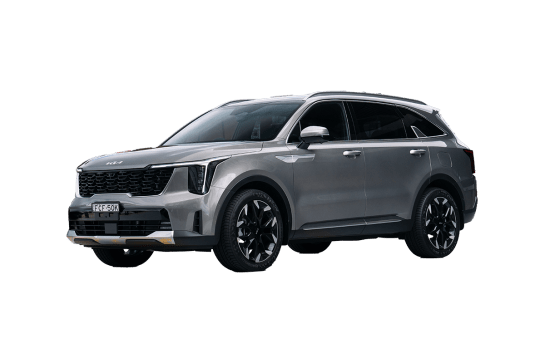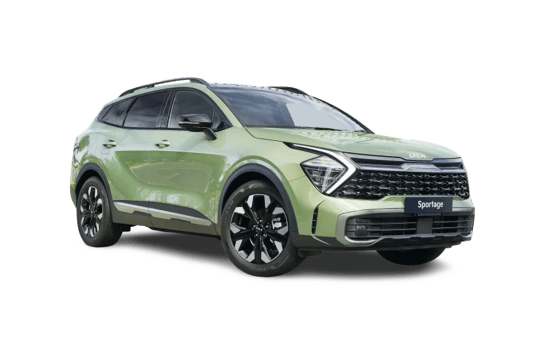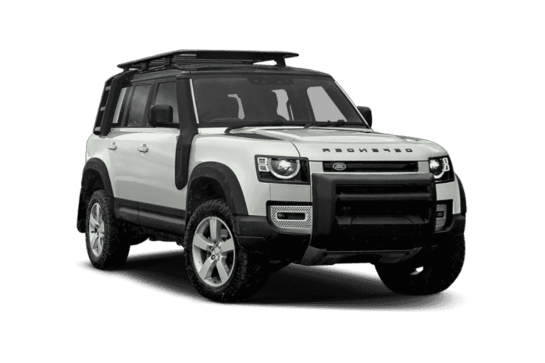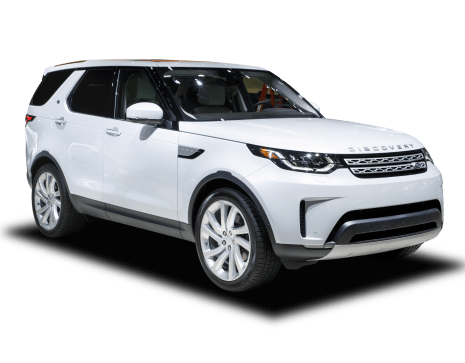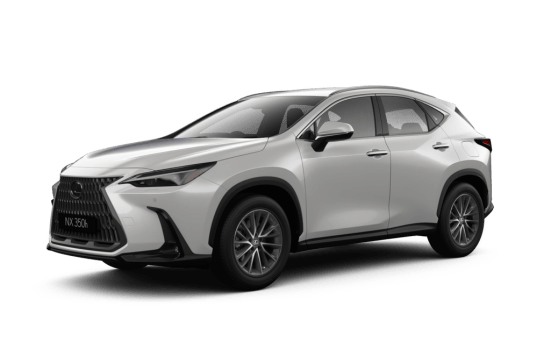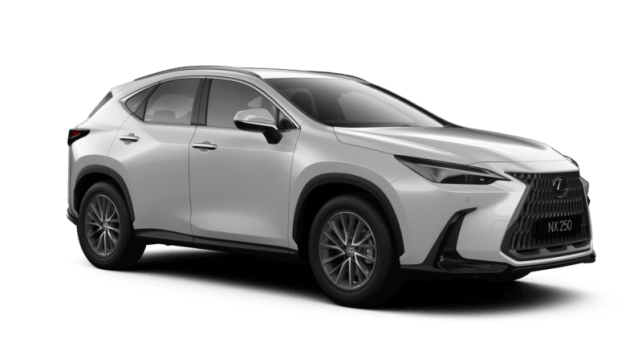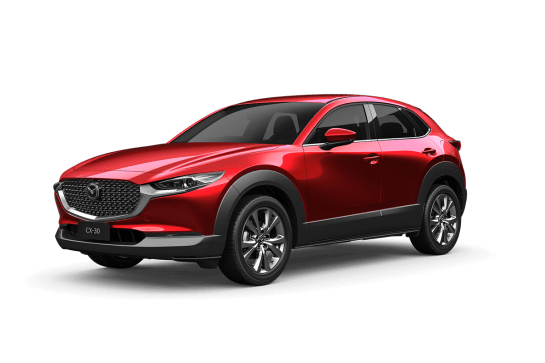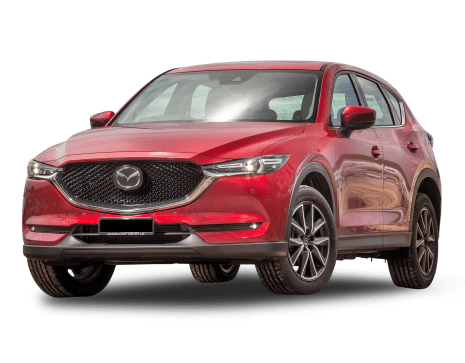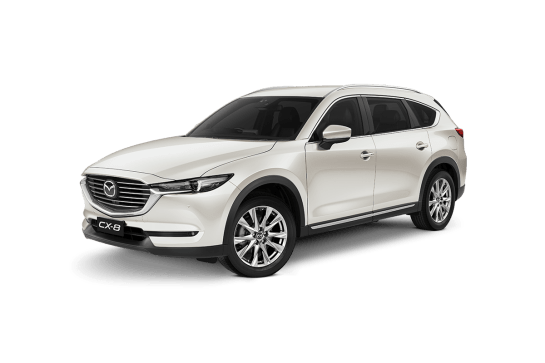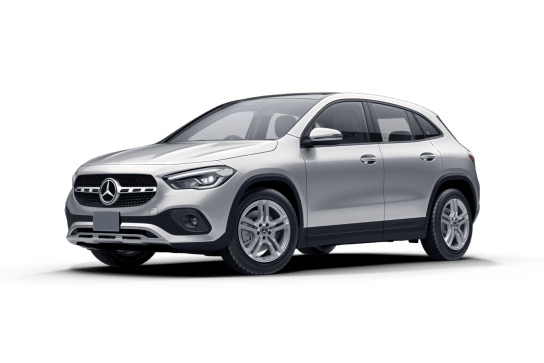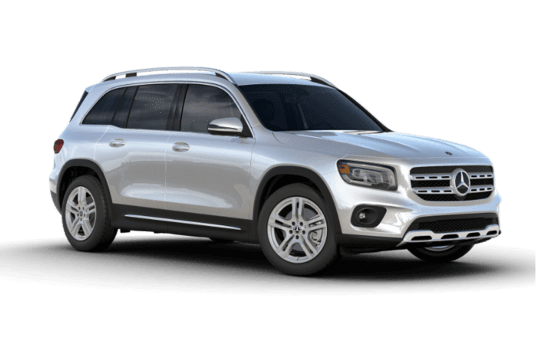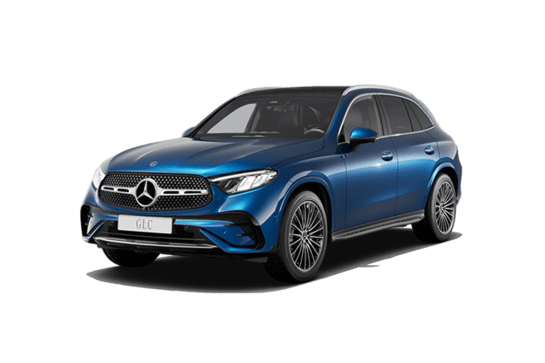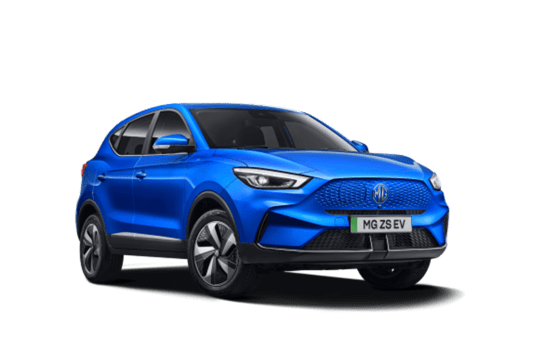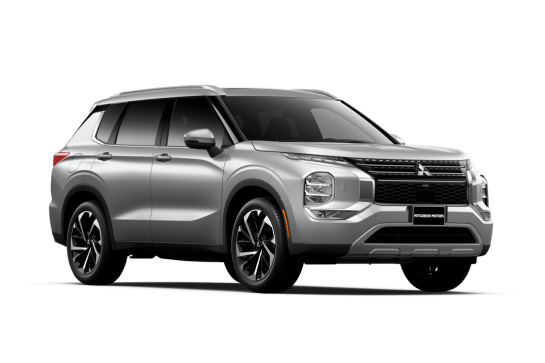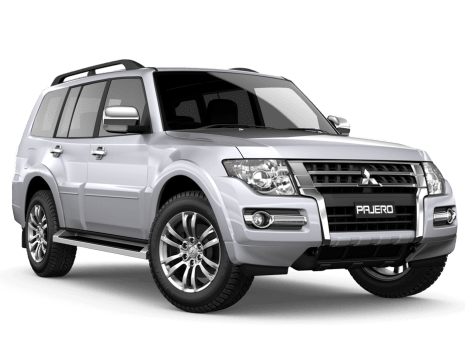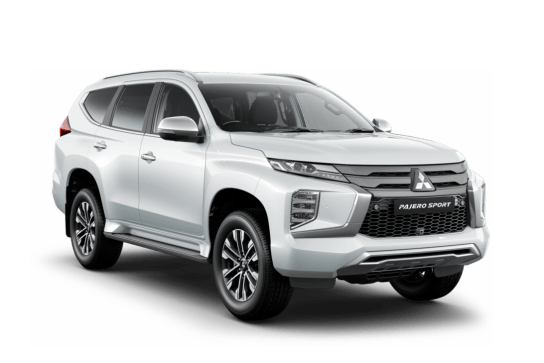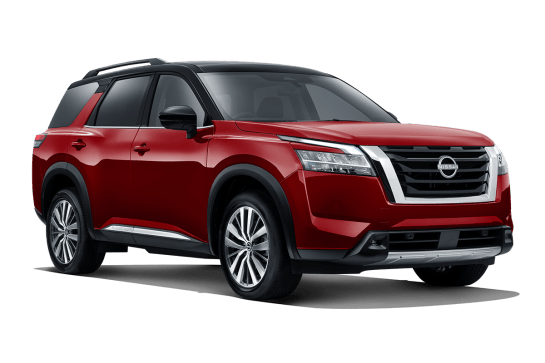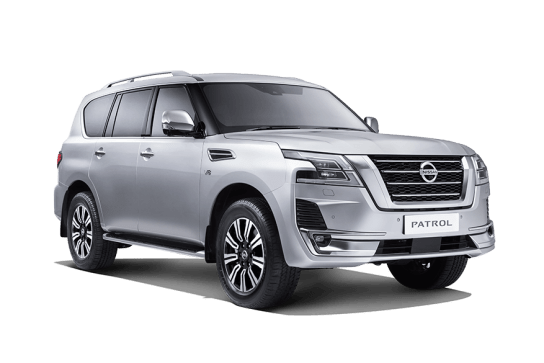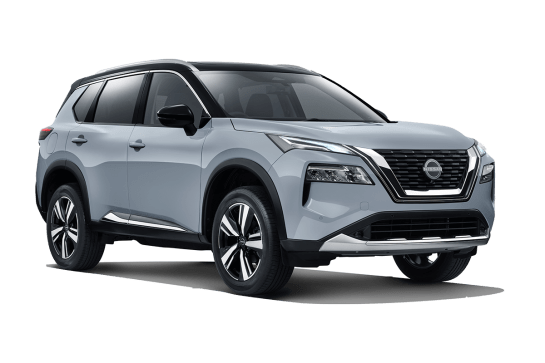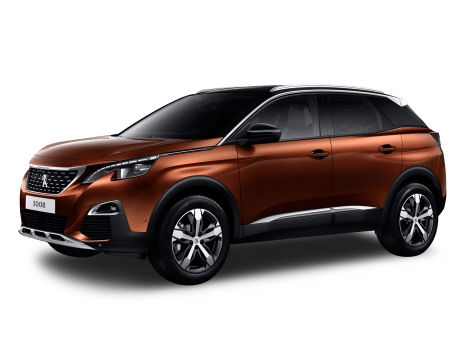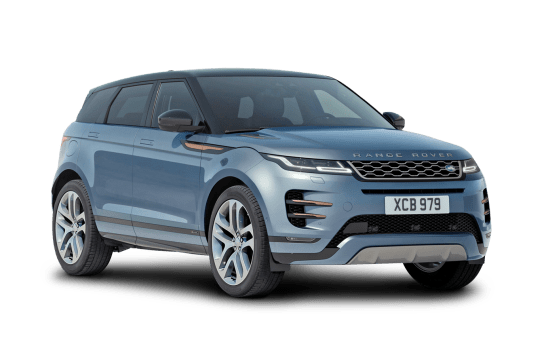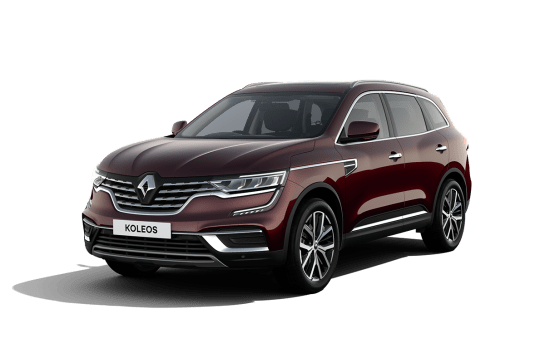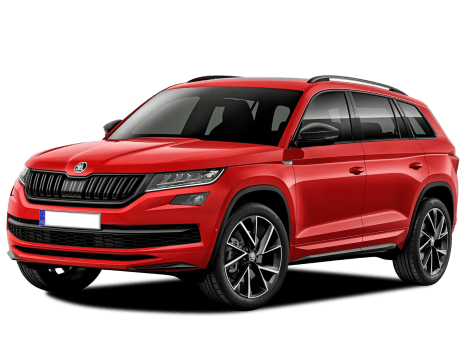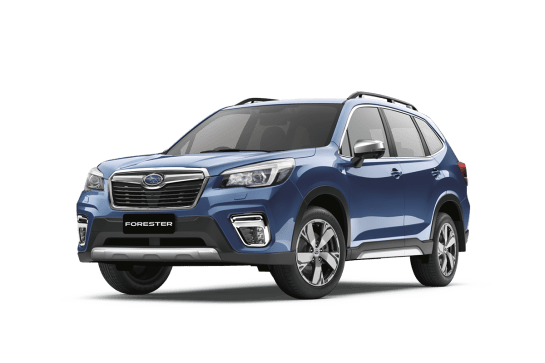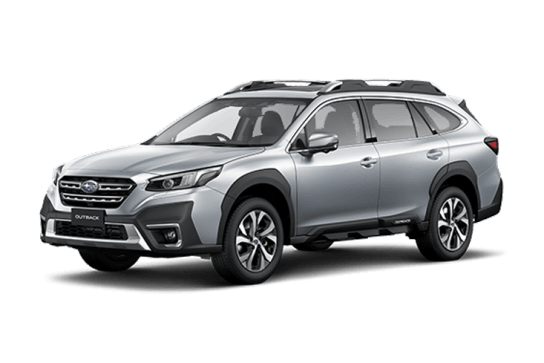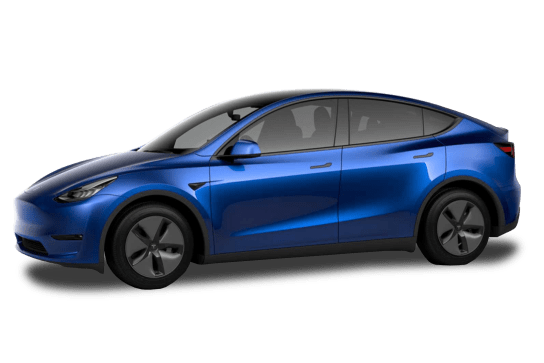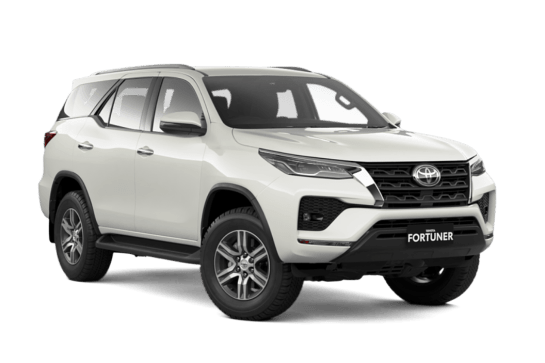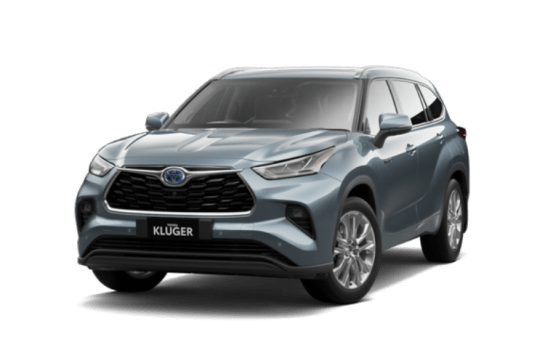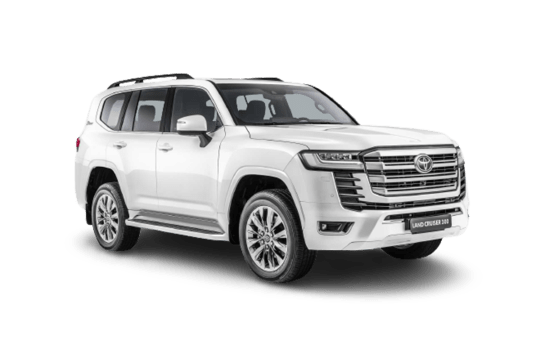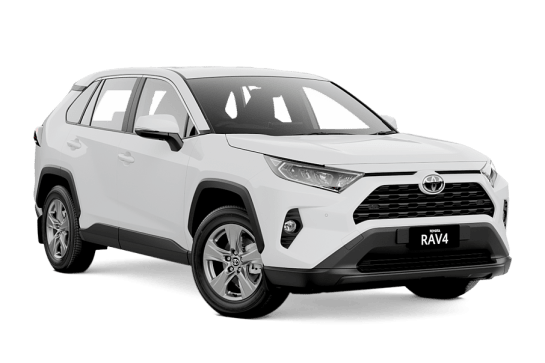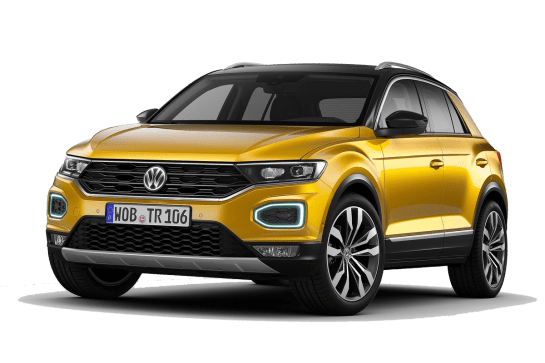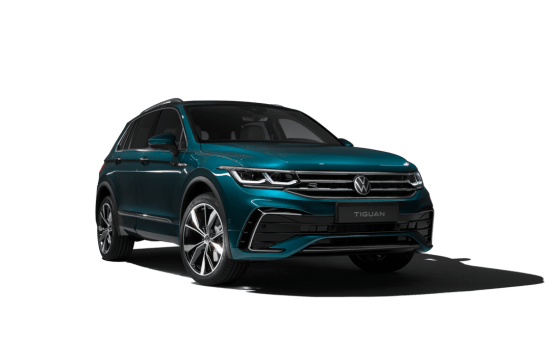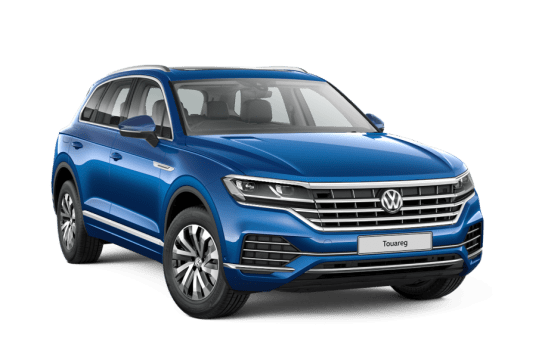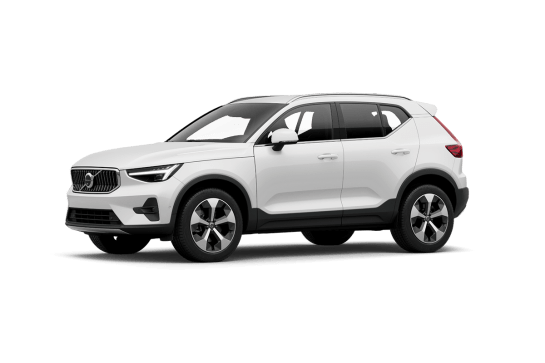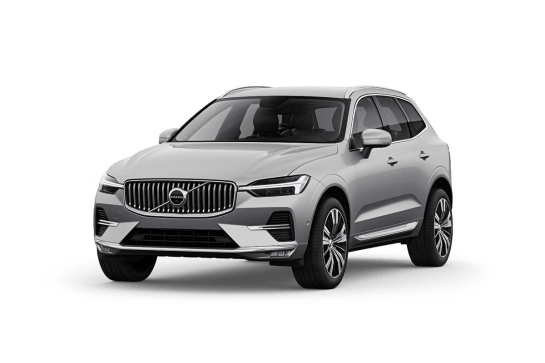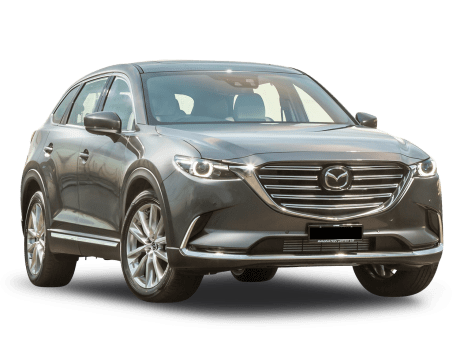
Mazda CX-9 VS Isuzu MU-X
Mazda CX-9
Likes
- New 10.25-inch display
- Seven-seater's versatility
- Comfortable ride
Dislikes
- Expensive AWD option
- Six-seater's compromises
- Older ANCAP safety rating
Isuzu MU-X
Likes
- Packed with standard features
- Solid touring platform
- 4WD capability
Dislikes
- Firm suspension
- Some may not like the noise
- Need all-terrain tyres
Summary
Mazda CX-9
The second-generation Mazda CX-9 may have been on sale in Australia for nearly five years now, but it remains the second best-selling large SUV using unibody construction (as opposed to old-school, off-road-focused body-on-frame).
That said, it is getting on a bit, so Mazda’s given it an update with a twist for 2021, hoping to inject a little bit more life into its flagship model.
And when we say twist, we mean it. After all, who would’ve thought there’d ever be a six-seat CX-9? Well, we’ve checked it out to see if it’s the version we needed all along. Read on.
| Safety rating | |
|---|---|
| Engine Type | 2.5L turbo |
| Fuel Type | Regular Unleaded Petrol |
| Fuel Efficiency | 8.4L/100km |
| Seating | 7 seats |
Isuzu MU-X
It’s an age-old debate: Which is the best vehicle for 4WDing, a wagon or a ute?
In order to draw closer to a definitive answer, we’ve pitted two of Isuzu’s well-equipped and very popular top-shelf 3.0-litre 4WDs – the seven-seat MU-X in LS-T spec and the five-seat D-Max X-Terrain – against each other to find out.
On paper, this seems like it should be a close contest.
Read more about
- 2025 Isuzu MU-X revealed: Major upgrades on the way for the best-selling Ford Everest and Toyota Prado rivalling off-road SUV
- 2024 Isuzu D-Max and MU-X allegedly suffering rapid front tyre wear due to steering geometry issues, with Mazda BT-50 'twin-under-the-skin' also called out
- Off-road rivals or also-rans? The Isuzu MU-X and GWM Tank 500 to lead the charge against the new Toyota LandCruiser Prado, but can they really take down the king?
The D-Max has recently been given a mid-life facelift, replete with revised exterior styling as well as useful upgrades to its multimedia system, while the MU-X has received a more modest model-year update.
While the MU-X now has an entry-level 1.9-litre turbo-diesel four-cylinder engine option, this test is focussed on the 3.0-litre version.
They are both well-equipped and have plenty to like, but which is the right one for you?
Read on.
| Safety rating | |
|---|---|
| Engine Type | 3.0L turbo |
| Fuel Type | Diesel |
| Fuel Efficiency | 8L/100km |
| Seating | 5 seats |
Verdict
Mazda CX-98/10
The CX-9 is still a great option for families looking for a large SUV, even if it is starting to show its age as new rivals continue to launch with newer technologies.
That said, the availability of a luxury-focused six-seat configuration (Azami LE AWD) for the first time might be enough to convince some buyers to give it further consideration.
But for others who need the versatility of seven seats, this is still the CX-9 we’ve all come to know and love – but just a little bit better – particularly in its best-selling Azami AWD form.
Isuzu MU-X/10
The D-Max and the MU-X are two impressive 4WDs and both of them have plenty of appeal as daily drivers and touring platforms, but for slightly different reasons.
Both are evenly matched in terms of 4WD capability and have plenty to like in terms of driver-assist tech, standard features, and all-round driveability, but each has definite advantages and some minor trade-offs.
Which one is best for you? Well, that really depends on your lifestyle and your needs.
I like the seven-seat MU-X. It has plenty of appeal, but, for my money, I’d go for the D-Max. I use my vehicle for carrying loads – kayaks, surfboards, camping gear, and sometimes even building materials, furniture, rocks and rubbish – and a ute gives me extra versatility in terms of carrying onboard loads.
| Isuzu D-Max | Isuzu MU-X | |
| Price and features | 8 | 8 |
| Design | 7 | 7 |
| Practicality | 8 | 7 |
| Under the bonnet | 8 | 8 |
| Driving | 8 | 8 |
| Efficiency | 8 | 8 |
| Safety | 8 | 8 |
| Ownership | 8 | 8 |
| Score | 7.9 | 7.8 |
Design
Mazda CX-99/10
Given its latest update is relatively minor, the CX-9’s exterior largely looks the same as before, which, depending on your point of view, is a very good thing. As far as we’re concerned, it certainly is.
That said, train-spotters will notice some differences, with the GT SP (new), Azami and Azami LE (new) grades getting a refreshed grille that’s slotted and available in two grade-specific finishes unlike the insert their carryover Sport, Touring and GT siblings still have.
And aside from the GT SP, Azami and Azami LE’s new sets of 20-inch alloy wheels (again in grade-specific finishes), the only other exterior change is the Azami and Azami LE’s larger-diameter chrome exhaust tailpipe extensions. Sporty!
Inside, the CX-9 has more changes in store, headlined by the new ‘floating’ 10.25-inch central display all but the Sport and Touring get (they stick with 7.0- and 9.0-inch units respectively).
The new set-up is powered by Mazda’s latest multimedia system, which is certainly an improvement over its predecessor, and a much needed one at that.
Worth noting, touch is not an input method, with the rotary controller on the centre console the only option, which is actually great for safety, so we’re all for it.
The Azami and Azami LE also get new quilted Nappa leather upholstery, which looks and feels great, and adds to the overall high-quality theme.
Otherwise, it’s pretty much business as usual, which is great because the CX-9 has always had a well-designed interior. Yep, if it ain’t broke, don’t fix it.
Isuzu MU-X
The D-Max and MU-X have never been particularly boring or indeed exciting in the looks department, which is a bonus in an age where inoffensive is sales gold.
But after its latest refresh treatment, the D-Max now has a bigger grille, new headlights, three-tier LED tail-lights, and redesigned wheels over the previous version.
Distinctive ‘X’ branding is included here and there – inside and out – and that adds a low-key class to the X-Terrain.
The MU-X is, well, the MU-X. Which is to say it doesn’t drum up any strong feelings – love or hate – either way.
For specs nerds, of which I’m one, the D-Max X-Terrain is 5310mm long (with a 3125mm wheelbase), 1880mm wide, 1810mm high and has a listed kerb weight of 2170kg. It has a wheel track of 1570mm and a 12.5m turning circle.
The MU-X LS-T is 4850mm long (with a 2855mm wheelbase), 1880mm wide, 1825mm high and has a listed kerb weight of 2180kg. It has a wheel track of 1570mm and an 11.4m turning circle.
| Isuzu D-Max | Isuzu MU-X | |
| Score | 7 | 7 |
Practicality
Mazda CX-99/10
Being an SUV that’s 5075mm long, 1969mm wide and 1747mm tall, practicality is arguably the most important thing for the CX-9, and with the option of six seats for the first time with the new Azami LE, it’s even more versatile.
All seven-seat grades have a 60/40 split-fold second row that manually slides and reclines the same as before, with only the Sport missing out on one-touch tumble operation, which makes accessing the 50/50 split-fold third row even easier, even if it’s still not graceful.
But the six-seat Azami LE is configured differently, given its second row has two captain’s chairs instead of a bench. That said, it operates in a very similar manner, just with power adjustment.
I still had around eight centimetres of legroom and four of legroom behind my 184cm (6'0") driving position, while the large transmission tunnel that’s a foot-space issue in seven-seat versions... isn’t.
One key difference with the very roomy and comfortable Azami LE is it only has four top-tether child-seat anchorage points, while all other grades have five thanks to their extra seat. Either way, four ISOFIX child-set anchorage points are split across the second and third rows.
Alternatively, the third row can be used by adults on shorter journeys, although they won’t have a lot of space to enjoy. Again, I'm 184cm tall and it’s tight back there, with no headroom or legroom on offer, but children will, of course, fare much better.
The CX-9’s boot is still pretty usable with all three rows in action, with 230L of cargo capacity available, but you can stow the two rear seats to get 810L in total.
And if you want maximum cargo capacity, the middle seats can also be folded, but not in the Azami LE, annoyingly.
Either way, the CX-9 doesn’t have a load lip but does have a flat floor, so loading bulkier items is a cinch, while two bag hooks and four tie-down points are on hand for securing loose items if they can’t fit in the double map pockets on the front seat backrests.
There are two cupholders in the third row, another two in the second row’s fold-down armrest (seven-seater versions) or large centre console (Azami LE), and another two in the first row’s larger centre console, while the front and rear door bins can also take bottles – and other knick-knacks.
All grades get USB ports in the first row, while the Touring and above also have them in the second row, and the GT and above also feature them in the third row. It’d be nice if there was no differentiation, though.
Isuzu MU-X
Not a lot separates these two vehicles in terms of functionality or comfort because they share essentially the same interior with only a few differences.
The X-Terrain does, however, pip the LS-T overall with a slightly more premium look and feel to the cabin. Subtle touches such as red stitching in the cabin trim enhance the interior’s quiet charm.
Both cabins have a pleasant, familiar feel about them and are easy spaces in which to swiftly get comfortable and to quickly figure out where all controls are. And it’s easy to use those controls.
The X-Terrain has a black leather-accented trim, but there are plenty of durable plastic surfaces to cope with the messiness of real life.
The MU-X also has a leather-accented trim, but the same, practical plastic surfaces are present.
Charging options are numerous throughout the cabins of both vehicles – a mix of USB-A, USB-C and 12V up front, and USB-A for the second row.
Storage places (in both vehicles) include recesses for your everyday carry gear, a suitably deep centre console , as well as dual cupholders up front, cupholders in the rear fold-down centre armrest and bottle holders in the doors.
There are also cupholders either side of the third row in the MU-X for passengers riding back there.
There’s one seemingly minor but noticeable difference between the operation of the 9.0-inch multimedia touchscreen systems.
The MU-X has physical button options to activate some functions (including to switch on the audio system, to adjust volume, access sat nav etc), while those functions and others are activated/adjusted via on-screen buttons in the D-Max. No big deal, but you may prefer one of those approaches.
The load spaces on offer are obviously also a big point of difference in these vehicles.
The D-Max has a tub and it is shielded by a manually-operated roller-shutter cover that can be partially or fully opened or closed.
The tub is 1495mm long, 1530mm wide (1122mm between the wheel arches) and 490mm deep.
It is a double-walled tub, with an under-rail tub liner, two cargo tie-down points and it has tailgate assist.
The roller cover offers at least some degree of security from thieves, and protection from the elements (rain, mud, snow etc), but the drum (in which the cover is stored when it is rolled open) does impact the packability of the load space.
Another option for D-Max owners is to get an Isuzu or aftermarket canopy, although that impacts the versatility of the load space because once it’s an enclosed area it makes it a bit more difficult to carry long and/or large loads in the tub.
The MU-X has the advantage here in terms of security and protection from the elements because its load space is fully enclosed from the factory.
The MU-X’s cargo area is 311 litres with all three rows in use; 1119 litres with the third row flat; and it’s 2138 litres with the second and third rows folded.
The rear cargo area has a cargo cover (so any potential crooks who look through your windows are unable to see your valuables), tie-down points and a 12V power outlet. There is a storage space under the rear cargo area floor and a tool storage space inside the driver’s side rear cargo wall.
| Isuzu D-Max | Isuzu MU-X | |
| Score | 8 | 8 |
Price and features
Mazda CX-98/10
The CX-9 has become more expensive, with some grades up a little, while others are up a lot. The range now starts from $45,990, plus on-road costs, and reaches $73,875 (see pricing table below), but there is more standard equipment now.
Either way, two new grades have joined the now-comprehensive CX-9 line-up, bringing the total to six, with the new GT SP slotting in above the mid-range GT but below the previously flagship Azami, which is now bettered by the new Azami LE.
The entry-level Sport and Touring round out the line-up, with each grade coming with front-wheel drive as standard, although all-wheel drive is an expensive $4000 option for all but the Azami that instead asks for a $4435 premium, and the Azami LE which gets it as standard.
Features-wise, the Sport gets dusk-sensing LED headlights, rain-sensing wipers, 18-inch alloy wheels, push-button start, a 7.0-inch central display, satellite navigation, Apple CarPlay and Android Auto support, digital radio, a six-speaker sound system, a head-up display, three-zone climate control and black cloth upholstery.
While the Touring has the same 18-inch alloy wheels, it steps up with keyless entry, a 9.0-inch central display, paddle-shifters (new), power-adjustable front seats with heating, and black leather upholstery.
The GT goes even further with 20-inch alloy wheels, a hands-free power-operated tailgate, a sunroof, the aforementioned 10.25-inch central display (new), a 12-speaker Bose sound system, a wireless smartphone charger (new) and heated outboard middle seats.
As its name suggests, the new GT SP is the sportier version of the GT, adding a unique black finish to its 20-inch alloy wheels and side-mirror caps as well as burgundy leather upholstery and red stitching for just $500 more.
Meanwhile, the Azami has 20-inch alloy wheels with a bright finish (new) as well as adaptive LED headlights, LED daytime running lights, a 7.0-inch multifunction display, a heated steering wheel and 'Pure White' or 'Walnut Brown' quilted Nappa leather upholstery (new).
And finally, the new Azami LE mimics the Azami but replaces its middle bench with two power-adjustable captain’s chairs with heating and cooling plus a dedicated centre console, so six seats in total instead of the usual seven.
Also of note, the CX-9 has a new metallic paintwork option: 'Polymetal Grey', which helps it stand out from the crowd.
For reference, the CX-9’s rivals include the soon-to-be-replaced Toyota Kluger ($44,850 to $68,574) and the recently launched facelifted Hyundai Santa Fe ($43,990 to $61,660) and new-generation Kia Sorento ($45,850 to $63,070).
2021 Mazda CX-9 pricing before on-road costs
| Sport FWD | automatic | $45,990 (+$70) |
| Sport AWD | automatic | $49,990 (+$70) |
| Touring FWD | automatic | $53,490 (+$180) |
| Touring AWD | automatic | $57,490 (+$180) |
| GT FWD | automatic | $62,990 (+$1270) |
| GT AWD | automatic | $66,990 (+$1270) |
| GT SP FWD | automatic | $63,490 (NEW) |
| GT SP AWD | automatic | $67,490 (NEW) |
| Azami FWD | automatic | $66,190 (+$1297) |
| Azami AWD | automatic | $70,625 (+$1686) |
| Azami LE | automatic | $73,875 (NEW) |
Isuzu MU-X
Both of these vehicles – the 2024 D-Max X-Terrain dual-cab 4x4 and the 2024 MU-X LS-T 4x4 – have a drive-away price of $67,990, excluding on-road costs. However, each has an extensive list of accessories fitted.
This X-Terrain has an electronic brake controller ($896.05), premium paint ($695), a 12-pin plug ($393.25), rubber mats ($215.56) and a tow bar tongue ($215.05).
Accessories fitted at time of sale attract an accessory stamp duty of $86. With those extras onboard this D-Max has a price as tested of $70,490.91.
This MU-X has a tow bar kit ($1182.25), electronic brake controller ($896.05), premium paint ($695), a 12-pin plug ($393.25) and rubber mats ($249.65). With those accessories onboard and accessory stamp duty of $136.06 this MU-X has a price as tested of $71,542.26.
Standard features onboard both vehicles include a 9.0-inch multimedia touchscreen system with sat-nav, Android Auto and wireless Apple CarPlay, an eight-speaker sound system, eight-way power-adjustable driver’s seat, remote engine start, smart entry and start and 20-inch machined-alloy wheels on 265/60R20 Bridgestone 684II HT tyres. This D-Max has 18-inch tyres.
Exterior paint choices on the X-Terrain include 'Basalt Black Mica', 'Mercury Silver Metallic', 'Mineral White', 'Neptune Blue', 'Obsidian Grey Mica', 'Magnetic Red Mica', 'Granite Grey Mica', 'Moonstone White Pearl' and 'Sunstone Orange Mica'.
Exterior paint jobs on the MU-X LS-T include 'Galaxy Blue Mica', 'Cobalt Blue Mica', 'Magnetic Red Mica', Basalt Black Mica, Obsidian Grey Mica, Mercury Silver Metallic, Moonstone White Pearl and Mineral White.
| Isuzu D-Max | Isuzu MU-X | |
| Score | 8 | 7 |
Under the bonnet
Mazda CX-97/10
All CX-9 grades are powered by a carryover 2.5-litre turbo-petrol four-cylinder engine, which produces 170kW of power at 5000rpm and 420Nm of torque at 2000rpm.
A six-speed torque-converter automatic transmission is standard, and again, you get the option of front- or all-wheel drive for all grades but one, the AWD-only Azami LE.
If you’re after a diesel-powered seven-seater, Mazda also has the similarly sized CX-8 in its line-up, but it still doesn’t offer a hybrid option in any of its SUVs, even though many rivals are moving in that direction, including the aforementioned Kluger, Santa Fe and Sorento.
Isuzu MU-X
Both of these vehicles have a 3.0-litre, four-cylinder, turbo-diesel engine, producing 140kW at 3600rpm and 450Nm from 1600 to 2600rpm, matched to a six-speed auto.
This engine and auto combination forms part of a proven powertrain and while these two vehicles may be a bit sluggish in acceleration terms and may not be the most dynamic vehicles to drive, the D-Max and the MU-X have a real tractability about them that negates any other flaws.
They both have part-time 4WD, with high- and low-range. Driver-assist tech such as 'Rough Terrain' mode has been tweaked with the aim of making Isuzu 4WDs perform off-road even better than before.
| Isuzu D-Max | Isuzu MU-X | |
| Score | 8 | 8 |
Efficiency
Mazda CX-97/10
According to the official combined fuel consumption figures (ADR 81/02), FWD variants of the CX-9 sip 8.4 litres per 100km, which isn’t too bad for a petrol-powered large SUV that weighs just shy of 1900kg. Claimed carbon dioxide (CO2) emissions are 197 grams per km.
And given they weigh a whisker more than two tonnes, AWD versions of the CX-9s drink a slightly higher 9.0L/100km and emit 211g/km.
We covered 188km in the Azami AWD and Azami LE AWD at the CX-9’s launch and recorded 11.5L/100km after primarily driving on country roads and highways.
While that figure is nearly 30 per cent higher than Mazda's claim, it’s not outlandish considering the type of vehicle the CX-9 is. Either way, results will vary.
For reference, AWD variants have a slightly large fuel tank (74L) than their FWD counterparts (72L), but they all take more affordable 91RON petrol at minimum.
Isuzu MU-X
Official fuel consumption for this D-Max is 8.0L/100km on a combined cycle which rises to 8.3L/100km for this MU-X is.
Actual fuel consumption on this test, from pump to pump, was 9.8L/100km for the D-Max and 10.2L/100km for the MU-X.
The D-Max has a 76-litre fuel tank. So, going by those fuel consumption figures, you should be able to get a driving range of about 775km from a full tank.
The MU-X has an 80-litre fuel tank and using our real-world consumption figure you should be able to get a driving range of about 784km.
| Isuzu D-Max | Isuzu MU-X | |
| Score | 8 | 8 |
Driving
Mazda CX-98/10
As far as large SUVs go, the CX-9 is one of the better ones to drive. It’s certainly not confused; it knows what it needs to do and does it well.
The engine is properly punchy down low, serving up plenty of initial torque, so much so that you rarely need to chase its top-end power. In that way, it’s very diesel-like, despite being petrol. Needless to say, acceleration is surprisingly brisk. Not bad, then!
And the transmission it’s matched to also does its job well. Gear changes are pleasingly smooth, if not quick, while it's receptive to heavy applications of the accelerator, kicking down a ratio or two with little hesitation. Yep, don’t bother with its Sport mode.
The CX-9 also rides pretty well thanks to its independent suspension set-up, which consists of MacPherson-strut front and multi-link rear axles with passive dampers. Indeed, the kids aren’t going to be upset when they’re onboard.
Again, we mainly drove on country roads and highways, but it proved to be comfortable, particularly at high speed. And even during those rare, in-town, low-speed moments, it still impressed, on lower-quality roads or not.
And while the CX-9’s electric power steering is well-weighted, some buyers might be left wishing it was a tad lighter, especially when parking, but that’s more about personal preference than anything else.
What is more universal, though, is the system’s lack of feel. Obviously, we’re not dealing with a sports car here, but a little communication through the wheel wouldn’t go astray, particularly on a twisty road.
Speaking of which, the CX-9 handles its mass pretty confidently around a corner. That said, while it is relatively tied down, it still regularly exhibits a fair degree of body roll to remind you that you’re dealing with a large SUV.
Isuzu MU-X
These two are evenly matched in terms of drivability and off-road capability.
We spent the lion’s share of our test time off-road but these two vehicles are fine on sealed surfaces; easy to drive (albeit a bit sluggish) and suitably refined (albeit a bit noisy).
Both can feel a tad agricultural to steer about at times but, as I said before, that’s okay and part of the Isuzu charm.
But beyond satisfying any daily-driving requirements these vehicles are impressive 4WDs.
From the engine-and-auto pairing, through to driver-assist tech, physical dimensions and simply general all-round suitability, these two are naturals in most off-road environments.
The D-Max and MU-X have plenty of low- and mid-range torque but both also have quite firm suspension over gravel and dirt tracks at speed, and are rather noisy. Although, if you’ve spent any time in a diesel 4WD the tractable engine’s subdued clatter won’t bother you at all.
But there are some differences between the two in terms of their overall performance off-road.
The D-Max has had, through recent development phases, a recalibrated off-road traction control system that's been improved to be more precise and effective through challenging terrain.
But the D-Max now benefits from the introduction of what Isuzu calls Rough Terrain mode, which operates like a boosted off-road traction control, claimed to kick into action at a point of less wheel-spin than a standard off-road traction control system, transferring torque to the wheels that have the most traction, sooner rather than later. Rough Terrain mode debuted in the MU-X in 2021.
This is not a magic pill by itself, but it’s another handy addition to the D-Max’s already-substantial off-road toolbox that also includes a rear diff-lock.
The D-Max has a greater listed ground clearance (240mm) than the MU-X (235mm) but both vehicles have the same wading depth (800mm).
The D-Max is somewhat hamstrung by its longer wheelbase (3125mm compared to the MU-X’s 2855mm wheelbase) and it has shallower approach and departure angles (27.3 and 19.0, respectively) than the MU-X (29.2 and 26.4), but its ramp-over angle is greater (not by much) at 23.8 degrees vs 23.1.
The MU-X is more nimble than the D-Max on technically challenging 4WD tracks, with its shorter wheelbase and shorter overall body length (4850mm vs the D-Max’s 5310mm). Its turning circle is 11.4m compared to the D-Max’s 12.5m.
Those factors don’t take anything away from the D-Max’s efficacy off-road, it simply means this ute needs to be driven with more careful consideration than the wagon.
Often, the size and type of standard tyres on a top-shelf 4WD straight out of a showroom are not ideal for 4WDing and should be replaced if off-roading is on the new owner’s agenda anytime soon.
However, the tyres on this D-Max and MU-X – 265/60R18 Bridgestone Dueler 684II HT (Highway-Terrain) tyres on the D-Max and 265/50R20 Bridgestone Dueler HTs on the MU-X – are okay, but not really up to scratch if tough 4WDing is what you’ll be doing.
The D-Max’s 18-inch wheel-and-tyre package is at least a more 4WDing-friendly sizing than the MU-X’s 20-inch combo.
Replace the HT tyres with a decent set of all-terrain tyres and maybe consider getting rid of the standard suspension while you’re at it and switch in an aftermarket lift kit, just for the hell of it.
Both vehicles have full-sized spares and in terms of packability, the D-Max has a listed payload of 930kg, while payload in the MU-X is 620kg.
Both vehicles can legally tow 750kg (unbraked trailer) and 3500kg (braked).
| Isuzu D-Max | Isuzu MU-X | |
| Score | 8 | 8 |
Safety
Mazda CX-98/10
ANCAP awarded the CX-9 its maximum five-star safety rating in 2016, and despite the test occurring nearly five years ago, its results still stand.
Needless to say, the game has moved on, with the Santa Fe and Sorento recently resetting the standard, while the Kluger is soon to follow suit.
The CX-9 does, however, get front and side airbags as well as curtain airbags that cover all three rows, whereas the Santa Fe and Sorento only cover the first and second rows.
All grades of the CX-9 also get front and rear autonomous emergency braking, lane-keep assist, blind-spot monitoring, rear cross-traffic alert, adaptive cruise control with stop and go functionality, traffic sign recognition, high-beam assist and driver attention alert.
A reversing camera and rear parking sensors are also standard in all grades, but the Touring and above add front parking sensors, while the Azami and Azami LE also get surround-view cameras.
Isuzu MU-X
The D-Max and the MU-X both have the maximum five-star ANCAP safety rating.
As standard they have AEB, eight airbags - dual front, curtain, side, driver's knee and far side (front centre) - and a comprehensive suite of driver-assist tech including 'Forward Collision Warning', 'Adaptive Cruise Control', 'Lane Departure Warning', a tyre-pressure monitoring system and a raft of other driver-assist tech.
| Isuzu D-Max | Isuzu MU-X | |
| Score | 8 | 8 |
Ownership
Mazda CX-98/10
As with all Mazda models, the CX-9 comes with a five-year/unlimited-kilometre warranty with five years of roadside assistance, both of which are average when compared to Kia’s market-leading seven-year terms with ‘no strings attached’.
Service intervals are 12 months or 10,000km, with the distance on the shorter side, although capped-price servicing is available for the first five visits, costing $2022 in total at the time of the writing, which is very reasonable.
Isuzu MU-X
The D-Max and the MU-X have a six-year/150,000km warranty and seven years of roadside assistance. That warranty is okay in terms of years, but unlimited km would be a welcome sweetener.
Service intervals are scheduled for every 12 months or 15,000km, whichever occurs soonest.
Capped price servicing covers the first five scheduled services for 24MY and later models (up to five years/75,000km - whichever occurs first) at a flat price of $449 for each service.
| Isuzu D-Max | Isuzu MU-X | |
| Score | 8 | 8 |




